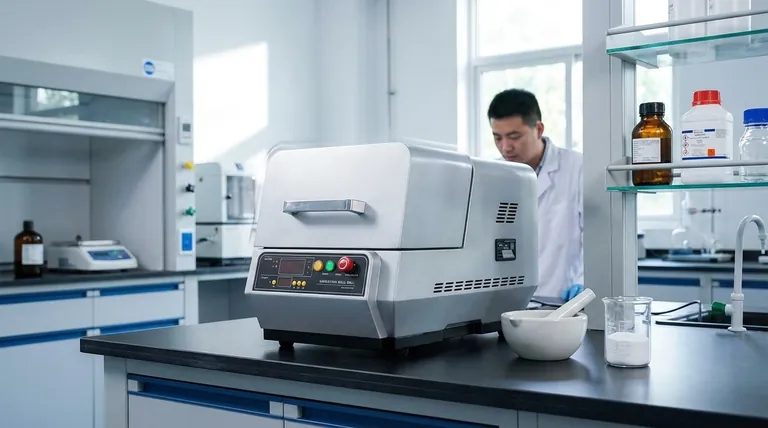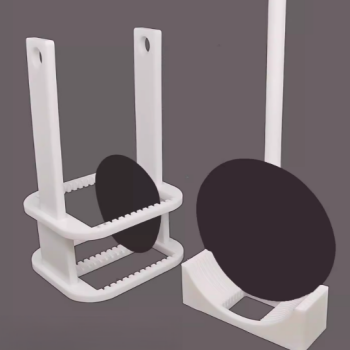In short, the process of creating smaller particles by crushing, grinding, or pulverizing a substance, typically using a mortar and pestle, is known as trituration. This is a fundamental technique used across various scientific and culinary fields to alter the physical properties of a solid material.
Trituration is more than just crushing; it is a controlled method of particle size reduction. The core purpose is to increase a substance's surface area, which in turn enhances its solubility, improves mixing uniformity, and increases its rate of reaction.

What Exactly is Trituration?
Trituration is a specific form of comminution, the general term for reducing the size of solid materials. It is defined by its method and its goals.
The Core Principle: Particle Size Reduction
The fundamental goal of trituration is to break down larger crystals or particles into a fine, uniform powder. This is a physical change, not a chemical one.
By reducing particle size, you dramatically increase the total surface area of the substance relative to its mass. This single change has significant downstream effects.
The Tools: Mortar and Pestle
The classic tools for trituration are the mortar (the bowl) and the pestle (the heavy, club-shaped grinder). Their design is ancient and remarkably effective.
The curved shape of the mortar and the rounded end of the pestle are designed to work together, trapping particles and subjecting them to immense, focused pressure.
The Action: Combining Crushing and Grinding
Effective trituration involves two distinct actions. First, an up-and-down crushing motion breaks apart large, coarse pieces.
Second, and most importantly, a firm, circular grinding motion is used to shear the smaller particles against each other and the surface of the mortar, resulting in a fine, consistent powder.
Why is Trituration Necessary?
The reason for performing trituration depends on the application, but the underlying scientific principles are universal. It is a critical step for improving the performance of solid substances.
Enhancing Solubility and Dissolution Rate
A larger surface area allows a solvent (like water) to attack more of the substance simultaneously. This means a triturated powder will dissolve much faster than the same substance in its coarse, crystalline form. This is paramount in pharmaceutical compounding.
Ensuring Homogeneous Mixtures
When blending two or more powdered substances, uniform particle size is essential for creating a homogeneous mixture. If one powder is coarse and another is fine, they will separate easily and resist uniform mixing.
Triturating powders together, a process known as geometric dilution, ensures that each component is evenly distributed, which is critical for consistent dosing in medicine or uniform results in a chemical reaction.
Increasing Reaction Rates
In chemistry, most reactions occur at the surface of a material. By increasing the surface area through trituration, you create more sites for a reaction to take place, which can significantly increase the reaction rate.
Understanding the Trade-offs and Best Practices
While simple in principle, proper trituration technique requires an understanding of the materials and potential pitfalls to ensure a safe and effective outcome.
Choosing the Right Mortar and Pestle
The material of your tools matters. Porcelain is the most common type, suitable for general-purpose grinding.
Glass mortars are best for liquids, chemicals that may stain, and softer materials. Their smooth surface makes them easier to clean but less effective for very hard substances.
Agate mortars are extremely hard and dense. They are used when grinding very hard materials or when it is critical to avoid any contamination of the sample from the mortar itself.
The Risk of Aerosolization
The process of grinding can create a fine dust that becomes airborne. This can be a significant inhalation hazard, especially when working with potent drugs, toxic chemicals, or allergens.
Always work in a well-ventilated area or use specific equipment like a powder containment hood when triturating hazardous substances.
Distinguishing from Similar Processes
Trituration is specifically the grinding of a substance in a dry state.
A similar process called levigation involves grinding a substance with a small amount of a liquid in which the substance is not soluble. This creates a smooth paste and is used to prevent grittiness in ointments and suspensions.
Applying Trituration to Your Goal
Understanding how to use this technique effectively depends on your final objective.
- If your primary focus is pharmaceutical compounding: The goal is achieving uniform particle size for even dosage and rapid dissolution.
- If your primary focus is chemical sample preparation: The goal is to maximize surface area to increase reaction speed and ensure a representative sample.
- If your primary focus is culinary or herbal preparation: The goal is to release volatile aromatic compounds and create a fine, uniform texture for better flavor and incorporation.
Ultimately, mastering trituration is a foundational skill that transforms coarse materials into more effective, consistent, and usable forms.
Summary Table:
| Aspect | Key Takeaway |
|---|---|
| Process Name | Trituration |
| Primary Goal | Increase surface area for better performance |
| Key Tools | Mortar and Pestle (Porcelain, Glass, or Agate) |
| Main Applications | Pharmaceutical Compounding, Chemical Prep, Culinary Arts |
| Critical Benefit | Ensures homogeneous mixtures and rapid dissolution |
Ready to achieve superior sample preparation and mixing results?
Trituration is a fundamental lab skill, and having the right equipment is crucial for accuracy and efficiency. KINTEK specializes in high-quality lab equipment and consumables, including a range of mortars and pestles designed for various applications.
Contact us today to find the perfect tools for your laboratory's particle size reduction needs. Let our experts help you enhance your processes for better solubility, uniformity, and reaction rates.
Visual Guide

Related Products
- High Energy Vibratory Laboratory Ball Mill Grinding Mill Single Tank Type
- Laboratory Test Sieves and Sieving Machines
- Laboratory Sterilizer Lab Autoclave Pulse Vacuum Lifting Sterilizer
- Laboratory Sterilizer Lab Autoclave Vertical Pressure Steam Sterilizer for Liquid Crystal Display Automatic Type
- Benchtop Laboratory Freeze Dryer for Lab Use
People Also Ask
- What is the purpose of ball milling? A Versatile Tool for Material Synthesis and Modification
- What are the different types of ball mill machines? Match Your Material to the Perfect Grinding Solution
- What is the procedure of a ball mill experiment? Master Particle Size Reduction for Your Lab
- What is the ball mill based on the principle of? Impact and Attrition for Efficient Grinding
- What is the average particle size of a ball mill? Master the Variables for Precise Grinding Results



















